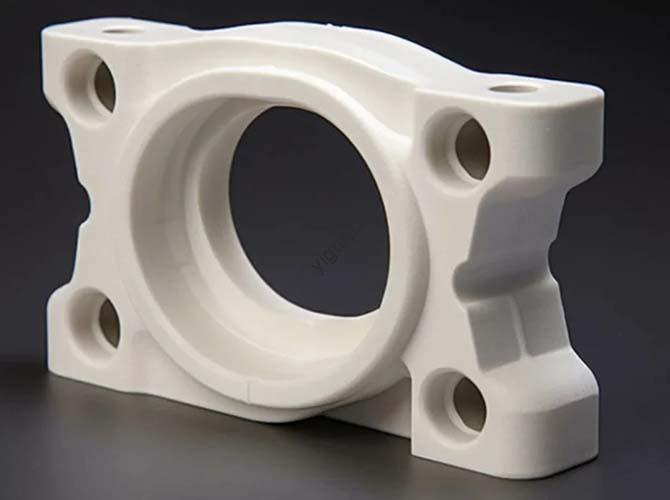Imagine this: You’ve spent hours designing a critical 3D prototype, hit “print,” and halfway through—it stops. The printhead is clogged, the material is stuck, and your timeline is derailed. Questo è 3D printing prototype jamming—a top frustration for manufacturers worldwide. But it’s not unavoidable. Sotto, we break down why jamming happens, how to fix it fast, and how to stop it from recurring.
1. Why Does 3D Printing Prototype Jamming Happen? A Clear Causal Breakdown
Jamming isn’t random—it’s almost always triggered by one (o più) of four key factors. The table below maps each cause to its real-world impact, so you can spot issues quickly:
| Causa categoria | Problema specifico | How It Causes Jamming |
| Proprietà materiali | High viscosity, wrong melting point, poor elasticity | Thick or rigid materials can’t flow through the printhead; materials that melt unevenly form clumps. |
| Manutenzione dell'attrezzatura | Clogged printhead, worn extrusion gears | Old resin or plastic buildup blocks the nozzle; worn parts can’t push material steadily. |
| Improper Operation | Wrong temperature/speed settings, incorrect loading | Too-low temp makes material solidify mid-flow; too-fast speed overwhelms the printhead. |
| Environmental Factors | Fluctuating temperature, alta umidità | Humid materials absorb moisture (causing bubbling and clogs); cold air thickens resins. |
2. Soluzioni passo dopo passo: Fix Jamming in Minutes
Quando 3D printing prototype jamming strikes, don’t panic—follow this linear, easy-to-follow guide to get back on track:
- Stop the Printer Immediately: Continuing to print will worsen clogs. Hit the “pause” button and turn off the heat to avoid damaging the printhead.
- Clear the Printhead:
- Per le stampanti in resina: Use isopropyl alcohol to flush the nozzle and remove cured resin.
- Per le stampanti FDM: Heat the nozzle to the material’s melting point, then push a cleaning filament (PER ESEMPIO., Pla) through to dislodge clogs.
- Check Material Quality: If the material is brittle, umido, or discolored, replace it—low-quality or expired materials are a top jamming culprit.
- Adjust Parameters: If settings caused the jam (PER ESEMPIO., too-cold nozzle), tweak the temperature (increase by 5–10°C for PLA) or slow the print speed by 10–15%.
- Test with a Small Print: Before restarting your prototype, print a simple 10-minute test (PER ESEMPIO., a small cube) to confirm the issue is fixed.
3. Misure preventive: Stop Jamming Before It Starts
Fixing jams is useful—but preventing them saves time and money. Use this checklist to build a jam-free workflow:
- ✅ Pretreat Materials: Dry filaments (PER ESEMPIO., Petg) in a dehydrator for 4–6 hours; preheat resins to room temperature (20–25 ° C.) per migliorare il flusso.
- ✅ Optimize Model Design: Avoid overly small channels (≤0.4mm) or complex internal structures—these force the printer to work beyond its limits. Use software like Simplify3D to add support structures that reduce stress on the printhead.
- ✅ Schedule Regular Maintenance: Clean the printhead after every 10 ore di stampa; replace extrusion gears every 6 mesi (or sooner if you notice wear).
- ✅ Use Simulation Software: Tools like PrusaSlicer’s “preview” mode let you simulate the print—you’ll spot potential jamming points (PER ESEMPIO., sudden material jumps) before they happen.
- ✅ Control the Environment: Print in a room with stable temp (18–24 ° C.) e umidità (40–60%). Use a dehumidifier if your space is damp.
4. Caso del mondo reale: How a Medical Manufacturer Beat Jamming
A leading medical device company was struggling with 3D printing prototype jamming while making custom implant prototypes. Their issue? Humid PLA filaments were causing clogs, delaying surgeries.
Here’s how they fixed it:
- They added a filament dehydrator to their workflow, cutting moisture levels in PLA by 80%.
- They switched to a high-precision printhead (with a 0.2mm nozzle) designed for medical-grade materials.
- They trained operators to check printhead cleanliness before each job.
Risultato: Jamming dropped by 90%, and prototype delivery time shrank from 5 days to 2—helping them get life-saving implants to patients faster.
5. La prospettiva della tecnologia Yigu
Alla tecnologia Yigu, vediamo 3D printing prototype jamming as a solvable problem, not a roadblock. Our team helps clients optimize workflows by pairing durable, low-jam materials (like our heat-resistant resins) with AI-driven monitoring tools that alert users to clogs in real time. We also offer training to help teams master preventive maintenance—cutting jamming incidents by 70% for our clients. The key is to address jamming holistically: fix the issue, then build habits to stop it from coming back.
Domande frequenti
- How often should I clean my 3D printer’s printhead to prevent jamming?
For regular use (3–5 hours/week), clean the printhead every 2 settimane. If you print daily or use high-viscosity materials (PER ESEMPIO., Addominali), clean it weekly.
- Can using recycled materials increase the risk of jamming?
It can—if the recycled material has impurities (PER ESEMPIO., polvere, small plastic bits). Per evitare questo, choose high-quality recycled filaments (with a purity rating of 95%+) and run a test print before using them for critical prototypes.
- My printer jams only with complex designs—what’s wrong?
Disegni complessi (with tight corners or tiny details) often require the printhead to move quickly or change direction suddenly. This can overwhelm the extrusion system. Try slowing the print speed by 10–20% for complex parts, or use a larger nozzle (PER ESEMPIO., 0.4mm invece di 0,2 mm) to improve material flow.
